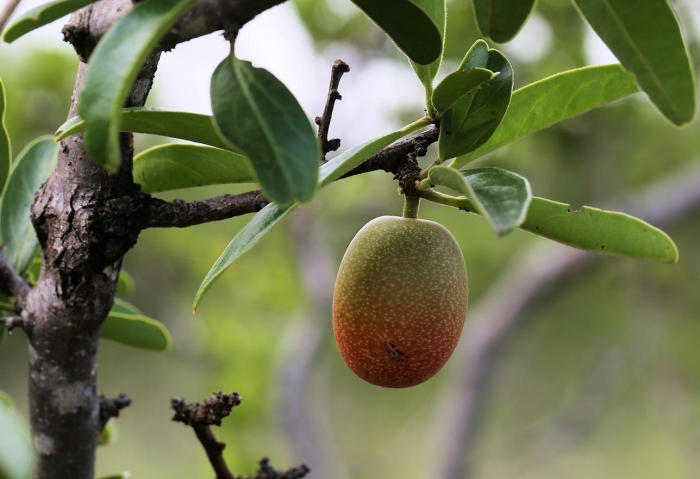Sourplum
(Ximenia caffra)
Sourplum (Ximenia caffra)
/
/

Wynand Uys
CC BY 4.0
Image By:
Wynand Uys
Recorded By:
Copyright:
CC BY 4.0
Copyright Notice:
Photo by: Wynand Uys | License Type: CC BY 4.0 | License URL: http://creativecommons.org/licenses/by/4.0/ | Rights Holder: Wynand Uys | Publisher: iNaturalist | Date Created: 42014 |























Estimated Native Range
Summary
Ximenia caffra, commonly known as Sourplum, is a small deciduous tree or shrub native to the woodland and savanna regions of Southeast Africa, including Botswana, Kenya, Malawi, Mozambique, South Africa, Tanzania, Uganda, Zambia, and Zimbabwe. It typically grows up to 20 feet tall and is characterized by its thorny branches and dense foliage. The leaves are oblong to elliptical, and the plant bears small, fragrant white or pale pink flowers. The flowering season varies depending on the region but often occurs in spring. The fruit is a yellow to red drupe with a uniquely sour taste and a dry aftertaste, high in vitamin C and potassium.
Sourplum is valued for its hardiness, being both frost-resistant and drought-tolerant, making it suitable for xeriscaping. It is often used in rural landscapes for natural land division barriers and is also planted for its edible fruits, which are consumed fresh or used in preserves. In traditional medicine, various parts of the plant are used to treat ailments. Sourplum requires minimal maintenance, thriving in full sun and well-drained soils. It is not commonly found in ornamental horticulture but has potential for use in ecological restoration projects. While generally pest-resistant, it can suffer from root rot in poorly drained soils.CC BY-SA 4.0
Sourplum is valued for its hardiness, being both frost-resistant and drought-tolerant, making it suitable for xeriscaping. It is often used in rural landscapes for natural land division barriers and is also planted for its edible fruits, which are consumed fresh or used in preserves. In traditional medicine, various parts of the plant are used to treat ailments. Sourplum requires minimal maintenance, thriving in full sun and well-drained soils. It is not commonly found in ornamental horticulture but has potential for use in ecological restoration projects. While generally pest-resistant, it can suffer from root rot in poorly drained soils.CC BY-SA 4.0
Plant Description
- Plant Type: Tree, Shrub
- Height: 4-20 feet
- Width: 4-20 feet
- Growth Rate: Moderate
- Flower Color: N/A
- Flowering Season: Summer
- Leaf Retention: Deciduous
Growth Requirements
- Sun: Full Sun
- Water: Low
- Drainage: Medium, Fast
Common Uses
Bird Garden, Drought Tolerant, Edible*Disclaimer: Easyscape's listed plant edibility is for informational use. Always verify the safety and proper identification of any plant before consumption., Low Maintenance
Natural Habitat
Native to woodland and savanna regions of Southeast Africa
Other Names
Common Names: Large Sourplum, Tallow wood, Monkey Plum
Scientific Names: , Ximenia caffra, Ximenia americana var. caffra, Ximenia americana var. tomentosa,
GBIF Accepted Name: